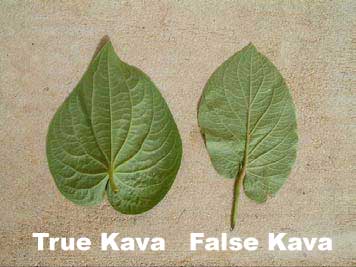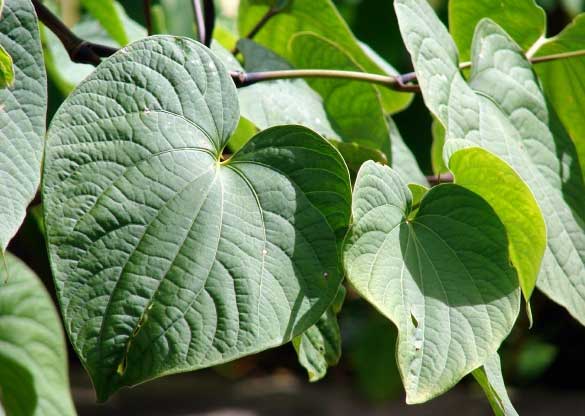False Kava
False kava / False ʻawa (Piper auritum)
Hawai‘i-Pacific Weed Risk Assessment Score: 15 High Risk. Visit https://www.hpwra.org for more info
 Regulatory Status: None
Regulatory Status: None
Prevention and Control Category: KISC Target Species
Report this species if seen on Kauai
Description
False kava is a shrub-like plant ranging 3′ to 6′ tall with upper branches that extend in a noticeably horizontal pattern. The light green leaves of this plant are large and have a pinnate vein pattern with unequally lobed bases. The leaves have a dense margin of short hairs along the edge. When the leaves are crushed there is a root beer or anise like odor. Some false kava leaves might have a red tint to the main vein. Opposite of the leaves are spikes of tightly-packed flowers in a long, single, arching spike. The flower spike is white to pale green.
Impacts
False kava has thick growth habit and spreading root suckers which displace other plants. Since it can be easily confused with true kava it is sometimes mistakenly interplanted, which then threatens the purity and preservation of true kava, vastly decreasing the value of the crop and the quality of the product. False kava does not have the same medicinal properties as true kava. False kava grows twice as fast as true kava and quickly takes over the habitat.
 Distribution
Distribution
False kava is native to South and Central America. The plant was introduced to Hawai’i accidentally as true kava. False kava is found widespread on Maui in Nāhiku and Hāna. On O’ahu there are 5 known plantings of false awa, all intentional ornamental plantings. The invasion on Kaua’i is limited to two known populations: in Kāhili Mountain Park, Waiakoloa in the Kilauea area. It is not known to be on Molokaʻi or Lanaʻi.
What you can do
If you see this species, call your local ISC.
Look-alike Species
True kava, ʻawa (Pip er methysticum): True kava is in the same family as false kava but has medicinal attributes that false kava lacks. True kava can be distinguished from false kava by its smaller, darker leaves which have equally-lobed bases. True kava also has a palmate vein pattern on the leaves.
er methysticum): True kava is in the same family as false kava but has medicinal attributes that false kava lacks. True kava can be distinguished from false kava by its smaller, darker leaves which have equally-lobed bases. True kava also has a palmate vein pattern on the leaves.
For more information, see:
- Piper auritum Datasheet from CABI
-
Piper auritum information from Dana Lee Ling of theCollege of Micronesia
